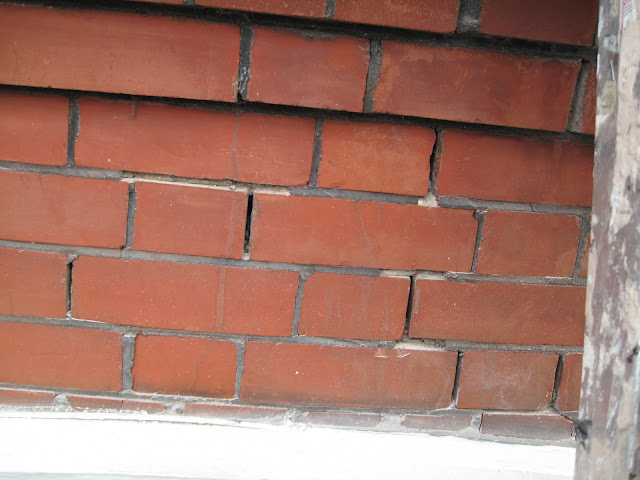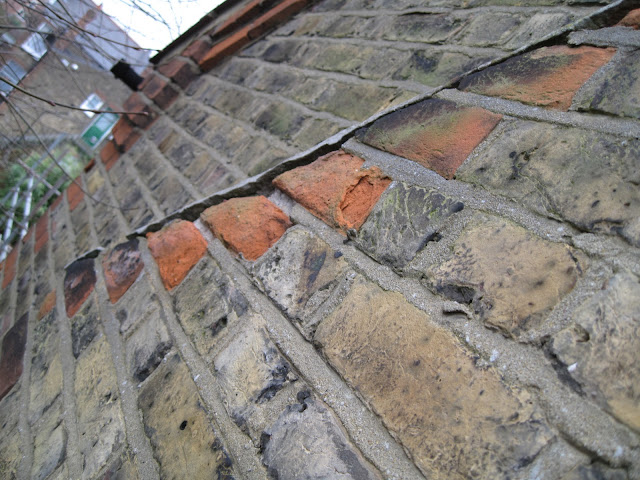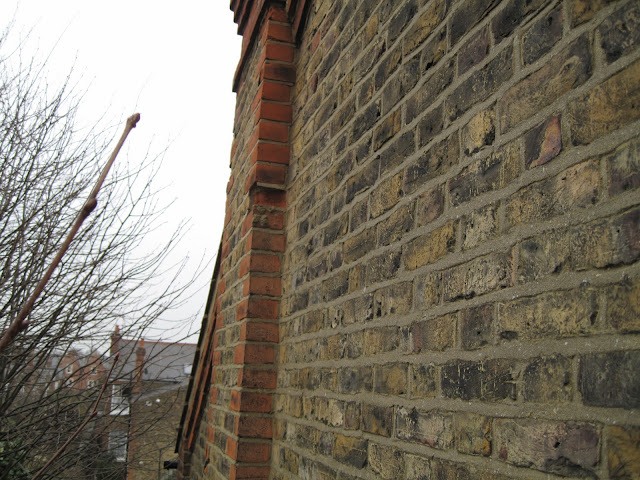There were a large number of bricks that have been damaged by frost. These must be replaced to prevent the problem spreading.
Lost mortar allows water to soak into the brickwork. Frost freezes the water which expands as it turns to ice, and so breaks the brick material. Once the surface becomes loose, the porous interior soaks up water even faster, more water can accumulate and the process accelerates. The brick face eventually falls off, and the problem spreads to the neighbouring bricks.

The problem seen above either started in the two vertical mortar channels above the damaged brick, or in the small porous yellow brick between the two.

The damaged surface is broken away easily. Then the brick it broken up using a chisel.

Once the brick is removed, the mortar is also cleaned out.


New bricks will be inserted and mortared into place. It is important that the new mortar has the same characteristics as the surrounding mortar, otherwise it will expand and contract differently, and break the weakest area around it.

Damaged bricks above the sill and window below allow water to enter and channel towards the wooden lintel. The lintel can then rot and cause the wall to sag.



 Once the water gets in, it channels down around the bricks. The frost strikes, and mortar fails. Imagine how many bricks would need to be replaced once the frost got into these.
Once the water gets in, it channels down around the bricks. The frost strikes, and mortar fails. Imagine how many bricks would need to be replaced once the frost got into these.In this case, the weakening mortar has caused the pillar to sink, and now the right hand window and frame is distorted. We'll probably have to extract and replace the window.
A pair of bricks has failed on a chimney stack. The change in angle of the surfaces probably created an entry point for water to soak into the mortar and then into the bricks above and below.
The sloping surface has channelled water along the chimney stack.
Look closer, and we find that the softer mortar is loose or missing.
Once the surface layer loses its support, or if the material is of different strength, cracks will appear and create new entry points.
Once we start poking around, we find that the bricks have failed and must be replaced.

If we had caught these problems a few years ago, the cost would be so much less today! Replacing one brick is so much easier.








